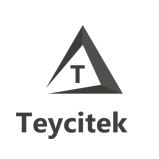As technology continues to evolve and advance, artificial intelligence (AI) is becoming increasingly popular in various industries, including the art world. AI art generators have made it possible for artists to create stunning and unique pieces of art with little to no human intervention. In this comparative review, we will take a closer look at the best AI art generators currently available and compare their capabilities and features.
Benefits of using AI art generators in the workplace
One of the biggest advantages of using AI art generators in the workplace is the ability to save time and resources. Traditional art creation can be a time-consuming process that requires a lot of skill and expertise. With AI art generators, artists can produce high-quality pieces of art quickly and efficiently. This allows them to focus on other important tasks, such as marketing and promotion.
Another benefit of using AI art generators is the increased creative potential. These tools can generate unique and innovative designs that artists may not have thought of themselves. This can lead to new and exciting art styles that are sure to attract attention and interest.
Finally, AI art generators can help to democratize the art world. By lowering the barrier to entry, more artists are able to create and showcase their work. This can lead to a more diverse and inclusive art community.
Overview of the top AI art generators
There are several AI art generators currently available on the market. One of the most popular is DeepDream. This tool uses deep learning algorithms to create surreal and abstract art. Another popular option is Artbreeder, which uses neural networks to generate unique and customizable art styles. Other notable AI art generators include Ganbreeder, StyleGAN2, and RunwayML.
Comparison of features and capabilities
Each AI art generator has its own unique features and capabilities. DeepDream, for example, allows users to create abstract art by applying a set of filters to an existing image. Artbreeder, on the other hand, allows users to mix and match different art styles to create their own unique designs. StyleGAN2 is known for its ability to generate high-resolution images that are indistinguishable from human-made art.
When choosing an AI art generator, it’s important to consider the specific needs of your workplace. Some generators may be better suited for certain types of art or industries.
Case studies of companies that have used AI art generators
Several companies have already started to incorporate AI art generators into their workflows. For example, Adobe recently launched a tool called Project Scribbler, which uses AI to turn sketches into high-quality paintings. Another company, Refik Anadol Studio, uses AI to create large-scale installations that blend art and technology. These examples demonstrate the potential of AI art generators to revolutionize the art industry.
Potential drawbacks and limitations of AI art generators
While AI art generators have many benefits, there are also potential drawbacks and limitations to consider. One of the biggest concerns is the potential loss of human creativity and originality. Some critics argue that AI-generated art lacks the emotion and nuance that comes from human experience.
Another concern is the potential for bias and discrimination. AI algorithms are only as unbiased as the data they are trained on. If the data contains biases, the resulting art may also contain those biases.
Ethics considerations surrounding the use of AI-generated art
As with any technology, there are also important ethical considerations to keep in mind when using AI-generated art. One of the biggest concerns is the potential for copyright infringement. If an AI art generator creates a piece of art that is similar to an existing work, it could be considered a copyright violation.
There are also questions about who owns the rights to AI-generated art. If an AI art generator creates a piece of art, who owns the copyright? Is it the artist who created the algorithm or the person who created the input data?
Future developments in AI art technology
Despite these concerns, the future of AI art technology looks promising. With advances in machine learning and natural language processing, it’s likely that AI art generators will become even more sophisticated and capable in the years to come. This could lead to new and exciting art styles that were previously impossible to create.
How to incorporate AI art into your workplace
If you’re interested in incorporating AI art into your workplace, there are several things to keep in mind. First, it’s important to choose an AI art generator that fits the specific needs of your company. You’ll also need to consider the potential ethical and legal implications of using AI-generated art.
Finally, it’s important to remember that AI art generators are not a replacement for human creativity and originality. While they can be a powerful tool for artists, they should be used in conjunction with human expertise and experience.
Conclusion
AI art generators are a fascinating and exciting development in the art world. They offer a range of benefits, from increased creative potential to time and resource savings. However, it’s important to consider the potential drawbacks and limitations of these tools, as well as the important ethical considerations that come with their use.
As technology continues to evolve, it’s likely that AI art generators will become even more sophisticated and capable. Whether you’re an artist looking for inspiration or a business owner looking to incorporate AI art into your workplace, the possibilities of this technology are endless.

